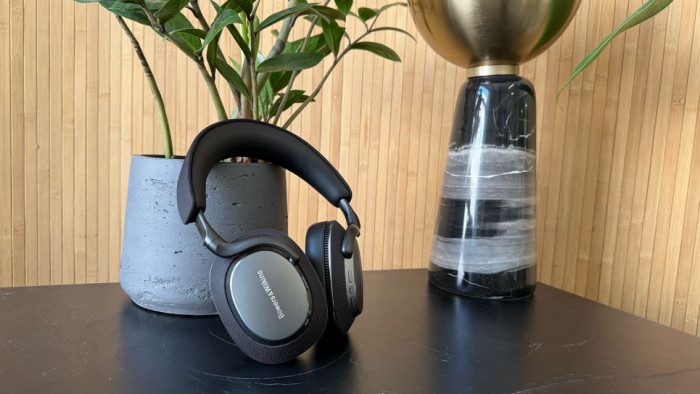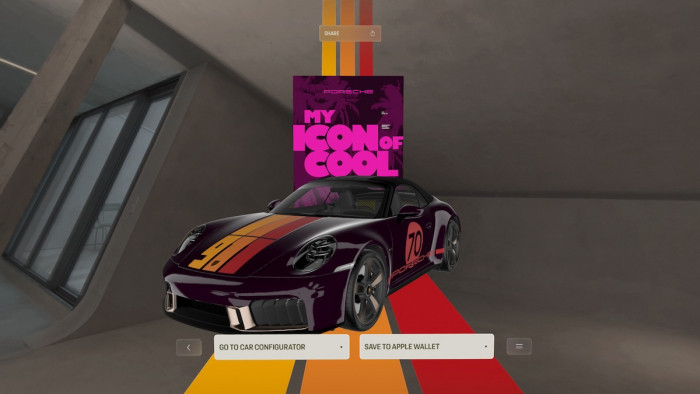Is the VR obsession going to turn us into couch potato porn addicts?
Is the VR obsession going to turn us into couch potato porn addicts?


Virtual reality is making a hyped return. But what can you actually do with it? Tom Bailey finds out…
A hurtling train smashes into you, but at the point of impact it turns into a flock of humming birds. You turn around and Frank Sinatra is playing a trombone that explodes in a shower of comets. Suddenly you’re falling through the cosmos and the sky peels back. You’re riding a spider bigger than Earth, looking down on the planet at all your friends...
Oh, so you haven’t experienced next-gen virtual reality yet? Well, there are three things you need to know. Firstly, LSD has nothing on this baby – it really is like crawling into the Matrix. Secondly, the new ‘low latency’ head-tracking goggles don’t leave you feeling (too) queasy. And thirdly, after more false starts than an egg and spoon race, VR will arrive in your living room this year. Microsoft, Sony, Samsung and Oculus – to name a few – are all tantalisingly close to selling their VR headsets to the general public. Even Apple is secretly working on a ‘faceputer’.
But beyond the amazing (but pointless) hallucinogenic, 360-degree demos and dorky wet dreams of cybersex (“Solenoid-encrusted lingerie? You shouldn’t have”), what is VR actually for? And will the new generation of wraparound HD goggles trigger a new found appreciation for the physical world – or turn us into isolated voyeurs and couch-withered porn addicts?
Full Immersion

Modern VR’s roots stretch back to the Eighties, when dreadlocked Silicon Valley rock star/guru Jaron Lanier popularised the phrase ‘virtual reality’.
He developed the first virtual worlds and impressed Nasa with his multi-sensory DataGlove and goggles, the latter of which resembled the ‘eyephones’ from Back To The Future II. But when the hype died, Lanier’s firm, VPL, went the way of the DeLorean.
Since then, VR has been a spectacular parade of false dawns and commercial failures (*cough* Nintendo Virtual Boy). You’d expect some kind of backlash, right? But no, it never materialised. Perhaps the whole ‘teledildonics’/cybersex thing was just too seductive, because despite being ‘10 years away’ for the past 40 years, 2012 saw VR shocked back to life via a Kickstarter campaign that raised 10 times more than it was seeking.
Oculus, makers of a 3D head-mounted display that allows the wearer to look around inside an HD world, sold more than 60,000 kits to eager developers. A feat that saw Facebook snap up the company for $2bn and promptly pledge to deliver one billion Rift headsets to consumers – thus creating the first mass market for VR apps and games.
“The Oculus is the posterboy for the virtual space,” says Peter Firth, insight editor at The Future Laboratory, which runs ‘trend safaris’ for corporations seeking to capitalise on the next big thing. “We already spend more time looking at screens than we do sleeping, so VR is a natural extension of that. Next-gen VR will be about how we design experiences so they don’t freak anyone out.”
No stranger to technology (or, indeed, freaking people out), director Spike Jonze (Her) has already explored the boundaries of VR filmmaking with a 360-degree documentary shot during the recent Millions March protest in the US. Meanwhile, at Sundance, Story Studios showed its first VR film – a project called Lost – that has a variable running time depending on what the viewer does within the experience. Hollywood is catching on, too. HBO recently used the Oculus to enable Game Of Thrones fans to climb the vertiginous Wall and survey those pesky wildlings.
That said, making VR films is a fiendishly complex, undeveloped art form. How does one choose where to look when one is standing inside a film? And where do filmmakers hide the lights and the crew? “It’s very different,” says Henrik Leichsenring, director of last year’s acclaimed Oculus Rift horror flick, 11:57. “The camera sees everything, and that was our first challenge – how can we direct the actors when we can’t be in the room?”
Brain Tricks
Creating VR video games is already proving a far more rewarding way to get headset fans’ dopamine flowing. Ex-Call Of Duty developer Reload Studios debuted the brilliant World War Toons, a first-person VR shooter built in 360 degrees that sees the player duck rocket-propelled missiles.
And there’s more – a lot more. When the Oculus goes on sale to consumers in November (expect it to cost around £300), wearers will be able to perch next to Mourinho in the dug-out, visit the incredible Museum Of Stolen Art, enjoy the first ‘teleportation tourism’ trips (the South African tourist board is currently installing VR shark-diving booths in bars in London and Manchester), or use Macca’s new app to stroll into a pyrotechnics-fuelled performance of Live And Let Die.
This revolution, say experts, will be akin to how the internet changed how we shop. As Firth points out, virtual reality will also democratise entertainment: “So, for example, at London Fashion Week this year, VR allowed guests to sit on the coveted front row beside Anna Wintour.” Not everyone’s cyberdream, we grant you, but proof that – despite the hype – VR could see us take a natural history class with David Attenborough or hop aboard the first manned mission to Mars.
But back to Earth for a moment. On a more scientific note, VR is also being touted as the answer to everything from global warming, to obesity and even genocide. “VR headsets are amazing empathy engines,” says Firth. “Imagine standing in the middle of a swarm of refugees as they flee for the border. Reading about it in the New York Times is fine, but if you can be there – and see it in ‘colour’ – it can only increase your empathy for far-away problems.”
Meanwhile, by applying a similar theory, severe-burns specialist Hunter Hoffman has perfected a soothing VR headset called SnowWorld. A brain-tricking snowscape, it helps patients during bandage changes and wound cleaning – the times when morphine does not even come close to dulling the excruciating pain.
Then there’s ‘virtual dining’ experiment, Project Nourished. The aim? To allow humans to eat anything they want – without incurring calories or guilt. It works like this: inside the headset you can see a steak. And it smells like a steak, thanks to aroma diffusers. But what you actually put in your mouth is a flavoured, artificially-made low-cal jelly. An admirable way to reduce food miles, but forgive us if we don’t cheer that one on.
Virtually Addicted
In an effort to make sense of the fast-approaching VR era – and the prospect of eating artificial gum while wearing an Oculus headset – we spoke to professor Bob Stone at the University Of Birmingham. The 28-year-veteran of VR sighs heavily. “The question I get asked the most is, ‘Why hasn’t anyone had cybersex?’” Well, yes, we were going to get to that… “Well, in truth they have. Today, the quest for the ultimate virtual sex act seems to be one of the preoccupations of Japanese technology developers. The devices leave a lot to be desired and the graphics are quite primitive.” Think the simulated sex scene between Sandra Bullock and Sylvester Stallone in Demolition Man, he says.
But with relationships flourishing via social media and dating apps anyway, is there any need to worry about VR’s impact on the real world? “If you mean addiction,” says Ben Delaney, author of Sex, Drugs And Tessellation: The Truth About Virtual Reality, “I think that virtual reality will actually cause some people to enjoy the real world more. Post the potential climate-change Armageddon, it will allow the survivors to experience what their ancestors so thoroughly f*cked up.” Oh, and as for creating a generation of VR addicts, says Delaney, “There will be virtual-reality addicts, just as there are porn addicts. Who cares? Better to keep them off the street.”








